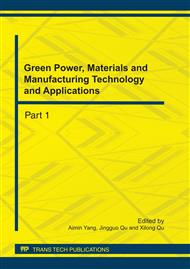p.457
p.461
p.466
p.471
p.476
p.480
p.485
p.489
p.494
Study on Intensified Bioleaching Technology by Static Magnetic Field of Chalcopyrite Tailings
Abstract:
Many different methods were found to increase the leaching rate by the researchers.In this paper,one of the methods--intensified leaching--was showed that the device for bioleaching was under the condition of static magnetic field.the device were designed according to Helmholtz coils,which can offered the static magnetic field,the leaching will start at the condition of the static magnetic field by the Thiobacillus ferrooxidans ( T. f ).the content of metals in samples were detected by Atomic fluorescence spectrometer after 25 days.Through the experimental analysis, the results showed that under the conditions of pulp density 5%,inoculum 10%,pH 2.0, magnetic induction intensity 3.14mT, the leaching rate of Cu and Fe in chalcopyrite mineral processing solid waste got improved. Especially the copper, the leaching rate raised from15.76% to 18.88%.
Info:
Periodical:
Pages:
476-479
Citation:
Online since:
August 2011
Authors:
Price:
Сopyright:
© 2011 Trans Tech Publications Ltd. All Rights Reserved
Share:
Citation:


